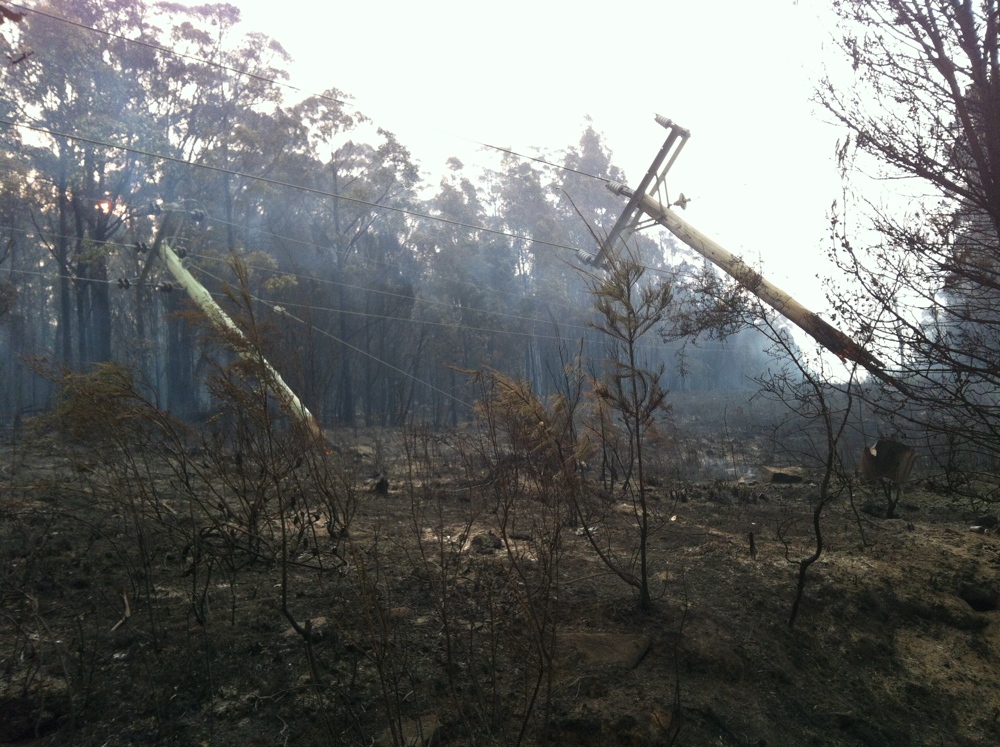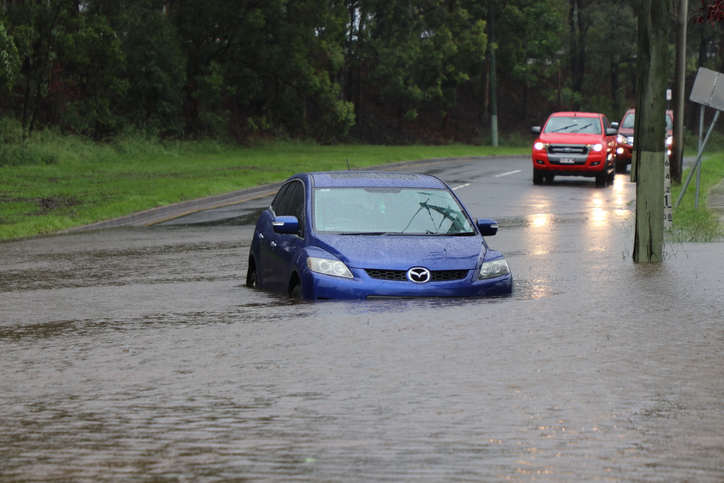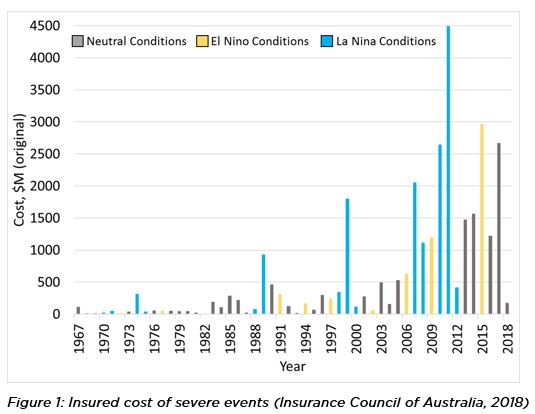A resilient grid – Bouncing back from a bad day
The capacity to resist unforeseen events and recover quickly from them is described as resilience. Resilient electricity networks reduce costs for customers and improve power reliability. This resilience is developed through good planning, prudent investment and an understanding of local conditions.
Australia’s electricity networks cover many different environmental areas, from remote, flat terrain to mountain tops, coasts and cities. Each of these environments experiences different natural hazards.
Northern Australia experiences cyclones, while south-eastern and south-western Australia experiences bushfires. All of Australia experiences extreme heatwaves, with some of the hottest temperatures ever experienced occurring in 2018.

Bad weather is something our networks can cope with, but extreme weather, like cyclones, can damage or destroy critical infrastructure like poles and wires. Flooding can inundate underground wires and above ground sub-stations.
It is not possible to build a network that could withstand anything and everything, and it would be prohibitively expensive to try, but it is possible to design networks so that critical parts can withstand severe weather and others can recover more rapidly to ensure that customers have power at a time when they may need it the most.
For instance, it is time consuming and expensive to replace poles, so it makes sense to strengthen them. There may be some equipment that should be raised above the flood plain and careful use of automation may mean that problems can be managed without human intervention.

BRISBANE, AUSTRALIA – March 30, 2017: Car stuck in floodwater in the suburb of Rocklea from huge rainfall as a result of Tropical Cyclone Debbie.
What is resilience?
Australia’s electricity networks are very reliable, minimising the number and length of outages. Resilience is a subtly different thing, with resilient networks able to recover rapidly from a major incident, reconnecting as many customers as quickly as possible and minimising the time without power.
The four R’s of resilience are Reduction, Readiness, Response and Recovery. They cover:
- Being prepared for a bad day by reducing the risk and impact of an event
- Making sure the network and customers are ready for any event
- Responding to an event by activating plans, assessing damage, maintaining and restoring services, communicating with customers and authorities and beginning to plan the recovery process
- Recovering from the event, making sure that lessons are learned for the future so that resilience is increased.
The good news is that delivering resilient electricity networks improves reliability and reduces costs to customers.
Bad days are expensive
It is fair to say Australia is the land of the catastrophic natural hazard, with climate variability (El Nino/La Nina) bringing increased risk of severe weather. El Nino (warmer phase) brings an increased risk of bushfires and extreme heat and during La Nina (cooler phase) there is an increased risk of flooding and cyclones.
The costs of dealing with natural hazards are also increasing. Insurance Council of Australia records show cyclones and flooding are Australia’s most costly events for insured loses[1]. This data doesn’t record the uninsured loses or the recovery costs of rebuilding, including critical infrastructure like electricity networks.
Typically, governments focus on incident response, trying to manage the event and its aftermath. International agencies such as the United Nations, through its International Strategy for Disaster Reduction, encourage an approach that supports risk reduction and preparedness. Evidence shows that every dollar spent reducing risk prior to an event replaces the $4 that would need to be spent on recovery and response[2].

Of course, care is needed to ensure that investments to increase resilience and reduce the risk of the impact of a disaster are appropriate. Large network investments are subject to tests to ensure that the benefits they deliver outweigh the costs.
It is difficult to determine the cost of an event that has been avoided or where damage has been minimised because of prudent investment, but tools are available to do this.
Actively working to deliver resilience
Electricity networks take delivering a reliable and resilient service very seriously. Significant research has been and continues to be undertaken by organisations to better understand their vulnerabilities and how global forecasts of severe weather apply to their patch. They are working more closely with their customers and other stakeholders to deliver resilience and understand how Australia’s regulations can support and strengthen approaches to it. In our rapidly transforming energy system, there is a great opportunity to leverage distributed energy resources and data to deliver increased resilience.
Australia’s electricity networks have faced a number of bad days, most recently in the floods in Far North Queensland, where local teams worked hard to protect critical equipment as the water rose and then set about reconnecting people as quickly as possible[3].
Through good resilience planning and a deep understanding of their local infrastructure and communities, our local electricity networks are able to ensure essential power supplies can to get back to normal as quickly as possible.
Australian electricity networks – a statement on national research priorities for natural hazards emergency management and resilience was launched this week (16 May 2019) by the Bushfire and Natural Hazards CRC, S&C Electric Company and Energy Networks Australia. It forms part of a broader national research agenda in natural hazards emergency management that was developed by the CRC in 2017.
Resources
Australian electricity networks – A statement on national research priorities for natural hazards emergency management and resilience – Report by the Bushfires and Natuarl Hazards CRC, May 2019
[1] ICA (Insurance Council of Australia), 2018, Key General Insurance Industry Statistics – Trend Series
[2] NIBS (National Institute of Building Sciences), 2017, Natural Hazard Mitigation Saves: 2017 Interim Report, Washington DC, USA, p344


